Are Puzzle Feeders Good for Dogs?
Key Takeaways:
- Puzzle feeders provide mental stimulation and physical exercise for dogs.
- They help slow down eating, reducing the risk of digestive issues.
- Puzzle feeders can alleviate boredom and prevent destructive behavior.
Introduction to Puzzle Feeders
Puzzle feeders, also known as slow feeder bowls, are specially designed food bowls and dispenser toys that present pets with obstacles to navigate in order to access their food. They’re popular among owners of cats and dogs who eat too quickly or need additional entertainment. These feeders provide positive mental stimulation and enrichment for pets, promoting healthier eating habits and reducing boredom. They are not just about feeding; they are about making eating a fun and stimulating activity.
Benefits of Puzzle Feeders
Benefits of Puzzle Feeders
Mental Stimulation
Dogs are intelligent creatures that thrive on mental challenges. A puzzle feeder provides the mental stimulation they need by making them work for their food. This can be particularly beneficial for breeds known for their high intelligence, such as Border Collies and Poodles. By engaging their minds, puzzle feeders help keep dogs interested and mentally sharp.
Physical Exercise
Using a puzzle feeder requires physical effort. Dogs have to paw, nudge, and sometimes even chew to get their kibble. This physical activity can help burn off excess energy, making puzzle feeders an excellent tool for high-energy breeds like Labrador Retrievers and Jack Russell Terriers. It’s a fun way to incorporate exercise into their daily routine.
Slowing Down Eating
Reducing Digestive Issues
One of the primary benefits of a slow feeder bowl is that it slows down the eating process. Fast eating can lead to digestive problems such as bloating and vomiting. By making dogs work for their food, puzzle feeders ensure they eat at a slower pace, reducing the risk of these issues.
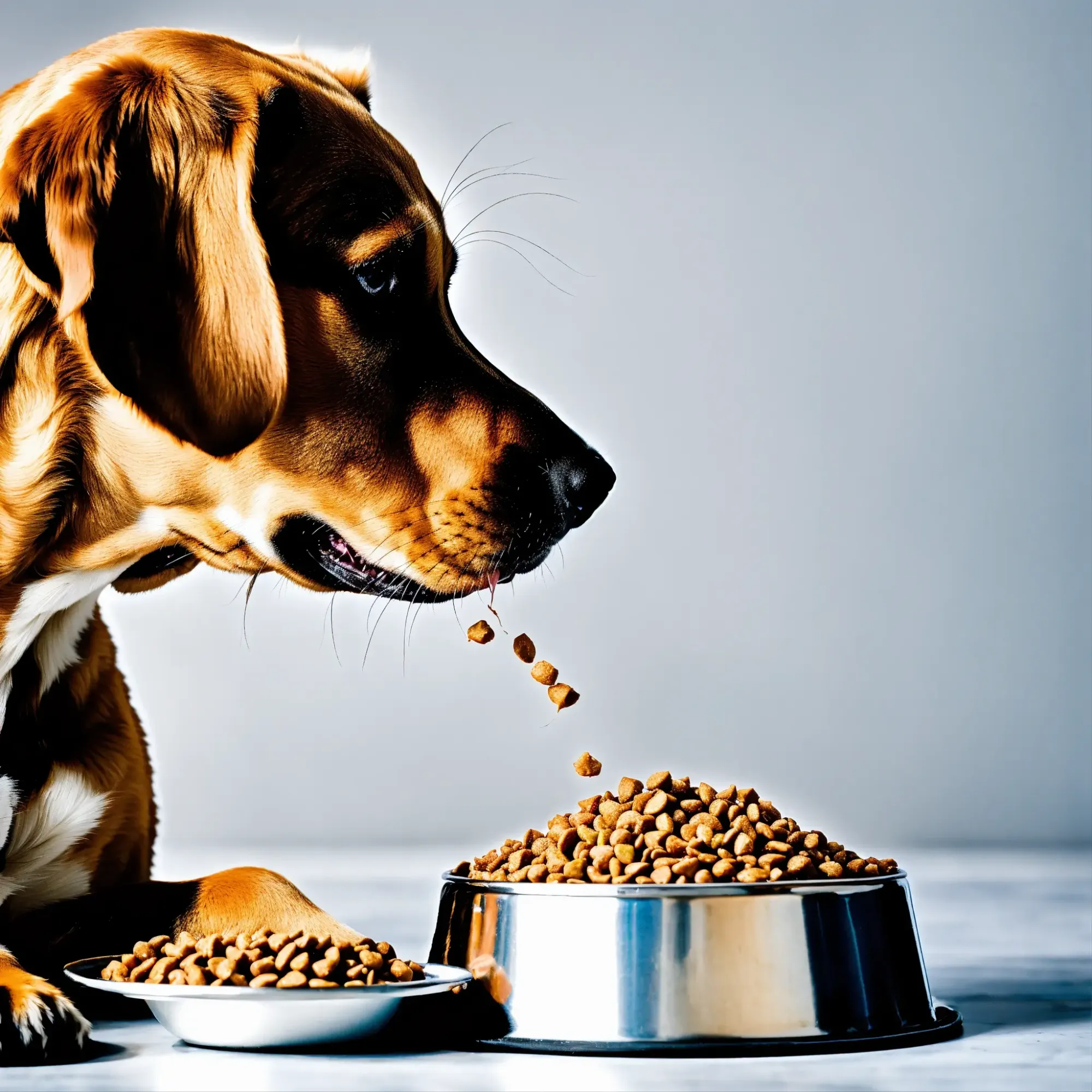
Promoting Healthy Eating Habits
Slow feeding dog bowls encourage healthier eating habits. When dogs eat too quickly, they often swallow air along with their food, which can cause discomfort. A puzzle feeder forces them to take their time, chew properly, and enjoy their meal, promoting better digestion and overall health.
Alleviating Boredom
Preventing Destructive Behavior
Boredom can lead to destructive behavior in dogs. Chewing on furniture, digging holes, and excessive barking are common signs of a bored dog. Puzzle feeders provide a fun and engaging way to keep dogs occupied, reducing the likelihood of these unwanted behaviors.
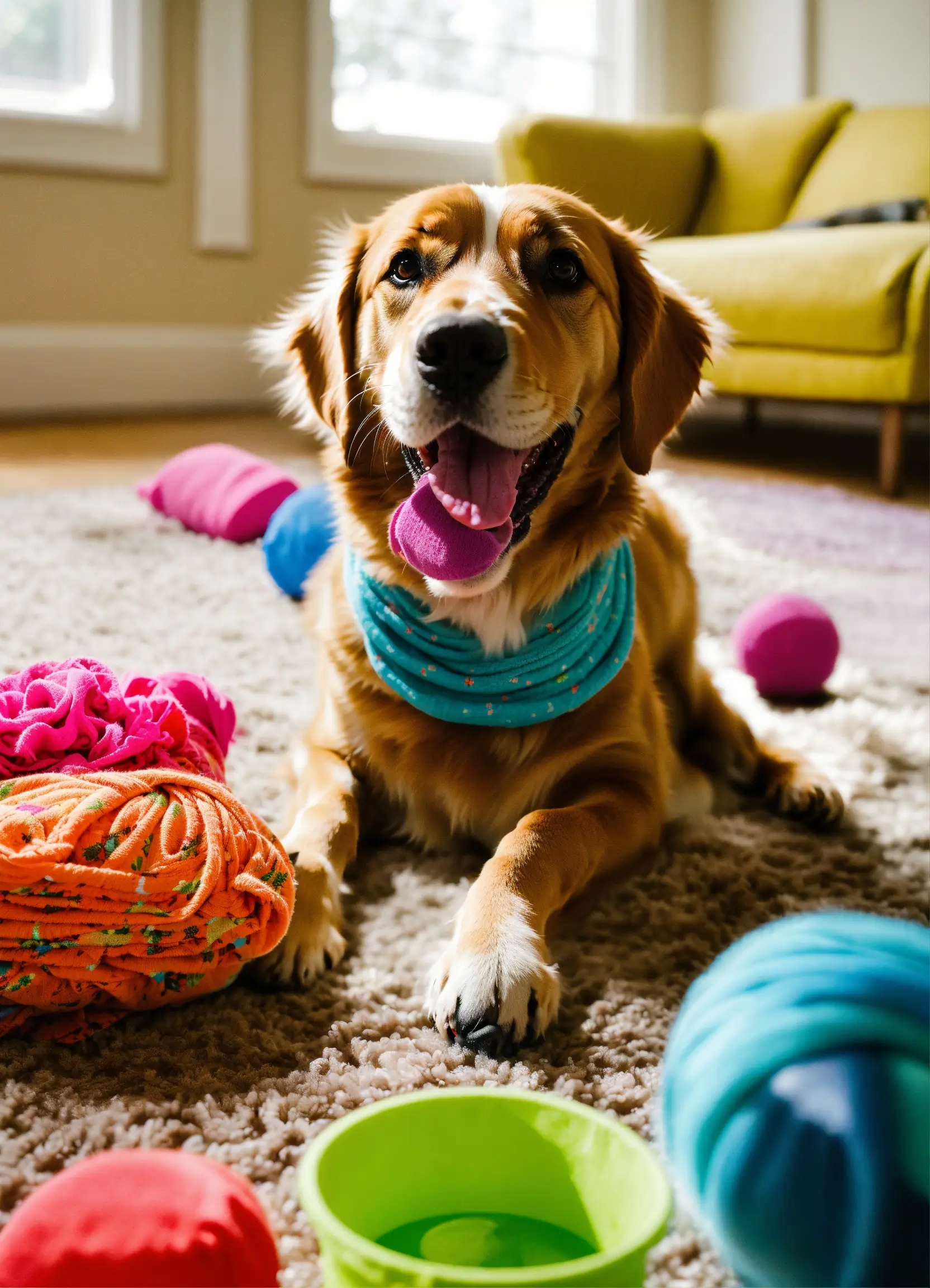
Keeping Dogs Engaged
Puzzle feeders are designed to be challenging, which keeps dogs engaged for longer periods. This is particularly useful for dogs that are left alone for extended periods. A puzzle feeder can keep them entertained and mentally stimulated, preventing boredom and its associated problems.
Types of Puzzle Feeders
Interactive Toys
Interactive toys are a popular type of puzzle feeder. These toys often have compartments or hidden areas where you can place kibble or treats. Dogs have to figure out how to access the food, providing both mental and physical stimulation. Examples include treat-dispensing balls and puzzle mats.
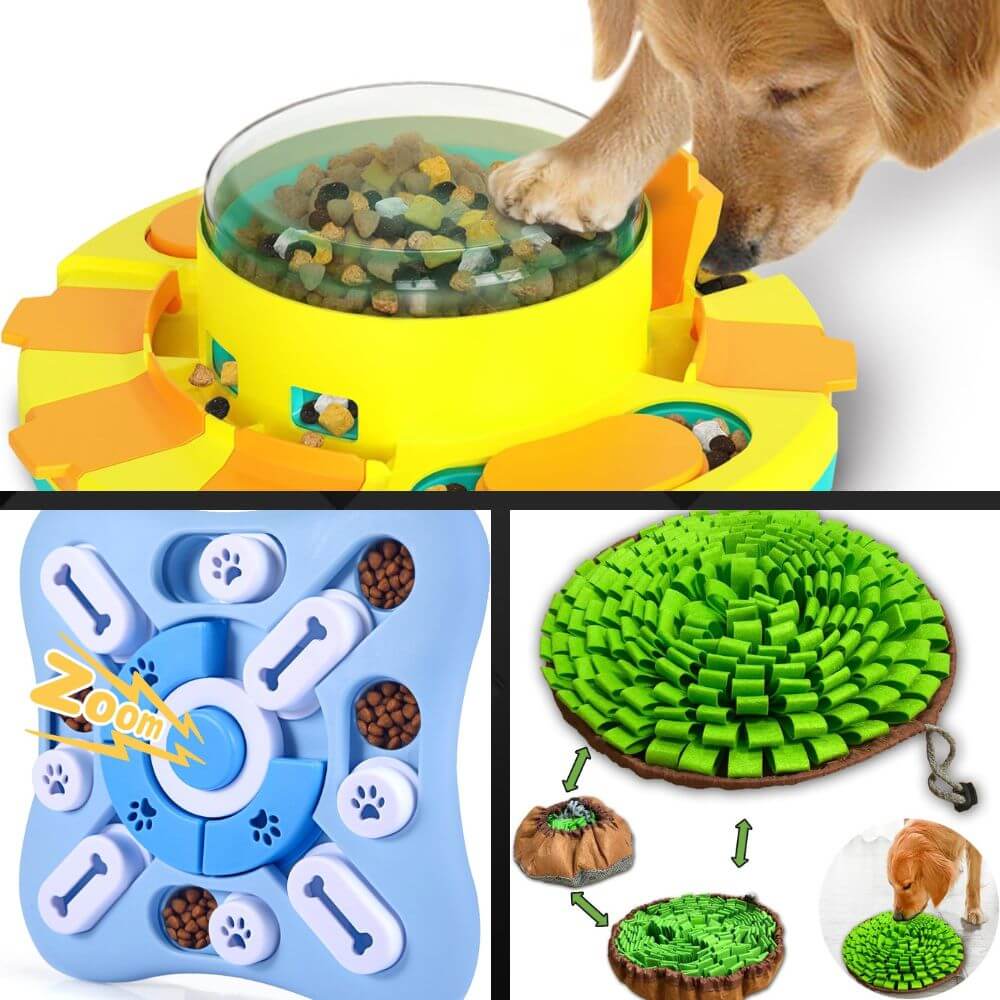
Slow Feeder Bowls
Slow feeder bowls are designed with ridges and obstacles that make it difficult for dogs to gulp down their food. These bowls come in various designs and are suitable for both dry food and wet food. They are an excellent option for dogs that eat too quickly.
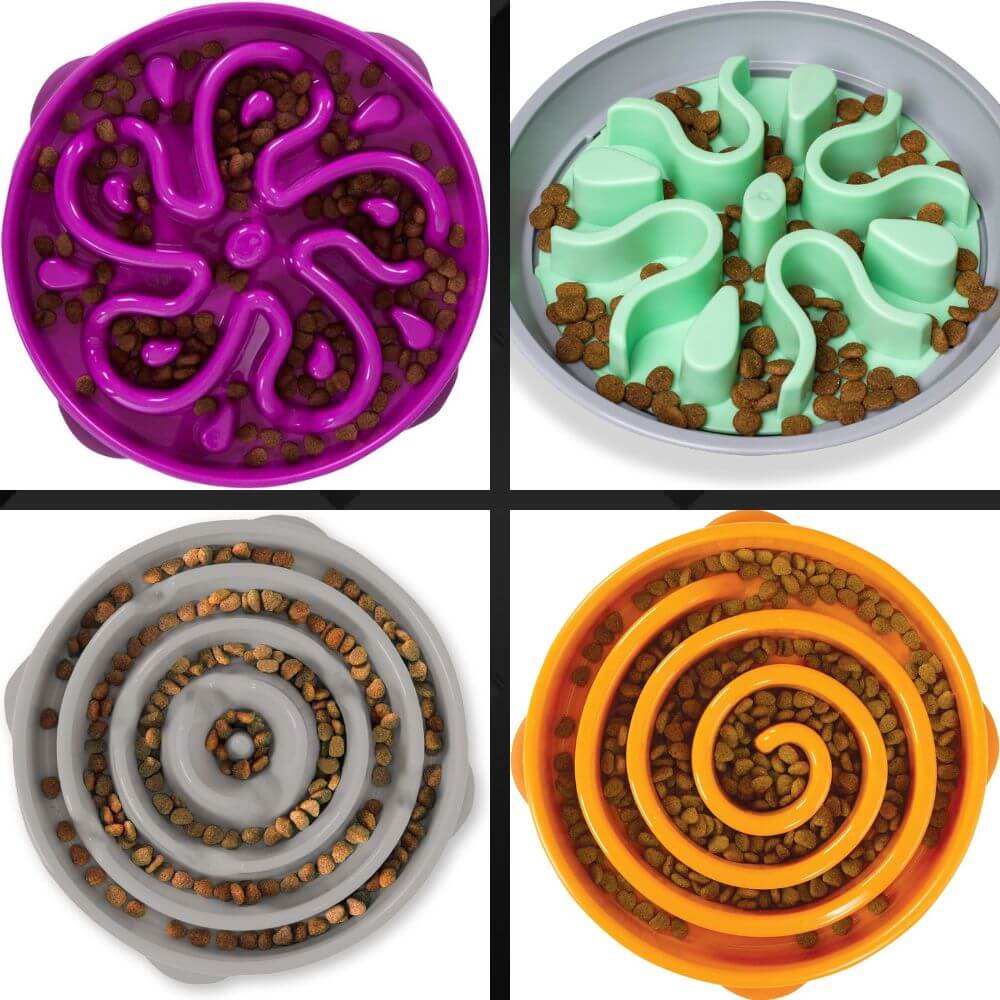
Choosing the Right Puzzle Feeder
Consider Your Dog’s Breed
Different breeds have different needs and abilities. For example, a small breed like a Chihuahua may find a complex puzzle feeder too challenging, while a larger breed like a German Shepherd may need a more difficult feeder to stay engaged. Choose a feeder that matches your dog’s size and intelligence level.
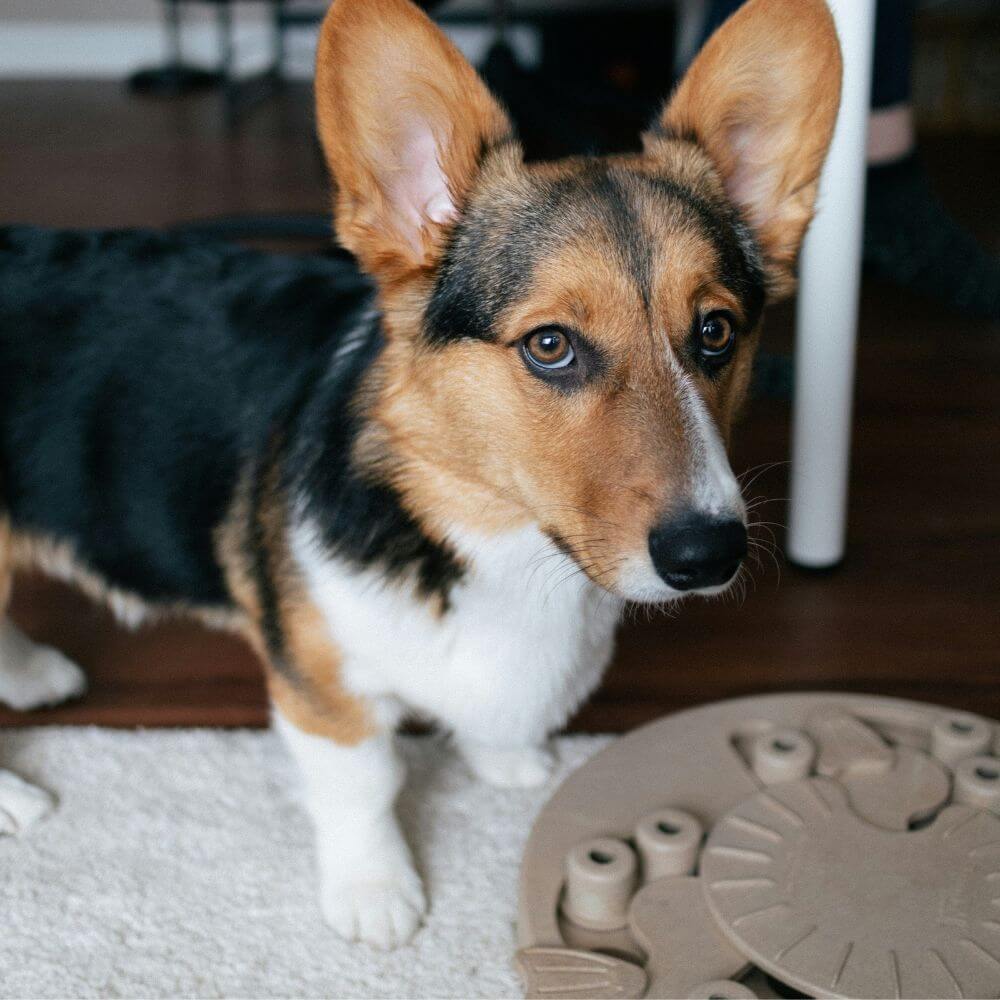
Material and Durability
Puzzle feeders come in various materials, including plastic, rubber, and silicone. It’s essential to choose a feeder that is durable and safe for your dog. Look for feeders that are dishwasher safe for easy cleaning. Avoid feeders with small parts that could be a choking hazard.
How to Introduce a Puzzle Feeder
Start Simple
If your dog is new to puzzle feeders, start with a simple design. Allow them to get used to the concept of working for their food. Gradually increase the difficulty level as they become more comfortable with the feeder.
Supervise Initial Use
When introducing a puzzle feeder, it’s important to supervise your dog initially. This ensures they understand how to use the feeder and prevents any frustration. Once they get the hang of it, you can leave them to enjoy their meal independently.
Cleaning and Maintenance
Dishwasher Safe Options
Many puzzle feeders are dishwasher safe, making them easy to clean. Regular cleaning is essential to prevent the buildup of bacteria and ensure your dog’s feeder remains hygienic. Check the manufacturer’s instructions to confirm if the feeder is dishwasher safe.
Regular Inspection
Regularly inspect the puzzle feeder for any signs of wear and tear. Replace the feeder if it becomes damaged to ensure your dog’s safety. A well-maintained feeder will last longer and continue to provide the benefits your dog needs.
Case Study: Max the Labrador

Max, a high-energy Labrador Retriever, used to eat his food in less than a minute. This fast eating often led to digestive issues and occasional vomiting. His owner decided to try a slow feeder bowl to address these problems. Within a week, Max’s eating pace slowed down significantly, and his digestive issues improved. The puzzle feeder also provided him with mental stimulation, reducing his destructive behavior around the house.
Case Study: Bella the Poodle

Bella, a smart and curious Poodle, often got bored when left alone. Her owner introduced an interactive puzzle feeder to keep her engaged. Bella quickly learned how to use the feeder, and it became her favorite activity. The puzzle feeder not only kept her entertained but also provided the mental challenge she craved.
Common Concerns
Will My Dog Get Frustrated?
Some dogs may initially find puzzle feeders challenging and frustrating. It’s important to choose a feeder that matches your dog’s skill level and gradually increase the difficulty. Patience and supervision during the initial stages can help your dog adapt to the new feeding method.
Are Puzzle Feeders Safe?
Puzzle feeders are generally safe when used correctly. Ensure the feeder is made from non-toxic materials and is appropriate for your dog’s size. Regularly inspect the feeder for any damage and replace it if necessary to maintain safety.
Summary
Puzzle feeders are a fantastic tool for enhancing your dog’s mealtime experience. They provide mental stimulation, physical exercise, and help slow down eating, promoting better digestion and overall health. By choosing the right feeder and introducing it gradually, you can keep your dog engaged, entertained, and healthy.
FAQ
1. How do I choose the right puzzle feeder for my dog?
Consider your dog’s breed, size, and intelligence level. Start with a simple design if your dog is new to puzzle feeders and gradually increase the difficulty.
2. Can puzzle feeders help with weight management?
Yes, puzzle feeders can help with weight management by slowing down eating and making dogs work for their food, which can reduce overeating.
3. How often should I clean the puzzle feeder?
Clean the puzzle feeder regularly, ideally after each use. Many feeders are dishwasher safe, making cleaning easy and convenient.
Thanks for reading my article on the benefits of dog puzzle feeders!
J



